Abstract
1. The penicillinases formed by penicillinase-constitutive mutant strains from two closely related varieties (749 and 6346) of Bacillus licheniformis have been isolated, characterized and compared. They are chemically, physicochemically and immunologically very similar, but differ enzymologically in absolute and relative activity on, and affinity for, different penicillins and cephalosporins. 2. The molecular weights of both types are approx. 23000. Neither enzyme contains any cyst(e)ine. However, in most other respects they show little resemblance to any of the other penicillinases so far isolated. 3. Their properties, whether isolated from cells (to which approx. 50% of the activity is normally bound) or from the culture supernatant, appear to be similar. However, the molecular weight of a preparation of enzyme from strain 749/C obtained from the culture supernatant was found to be significantly (over 20%) higher than that obtained from cells alone. 4. With benzylpenicillin, the enzyme from strain 749 has Vmax. approx. 6 times higher than that of the enzyme from strain 6346, but this difference is `compensated' by its affinity being 6 times lower. Thus, at the very low biologically effective concentrations of penicillin met with under natural conditions, where neither type of enzyme is more than a fraction saturated with its substrate, the antibiotic is hydrolysed at the same rate by both. As expected, the penicillin-sensitivities of single cells from the two strains were found to be identical. 5. It is suggested that the concept of `physiological efficiency' (defined as Vmax. divided by Km), applied to enzymes acting naturally under conditions of poor saturation with their substrates, may be useful for expressing their biological function in vivo.
Full text
PDF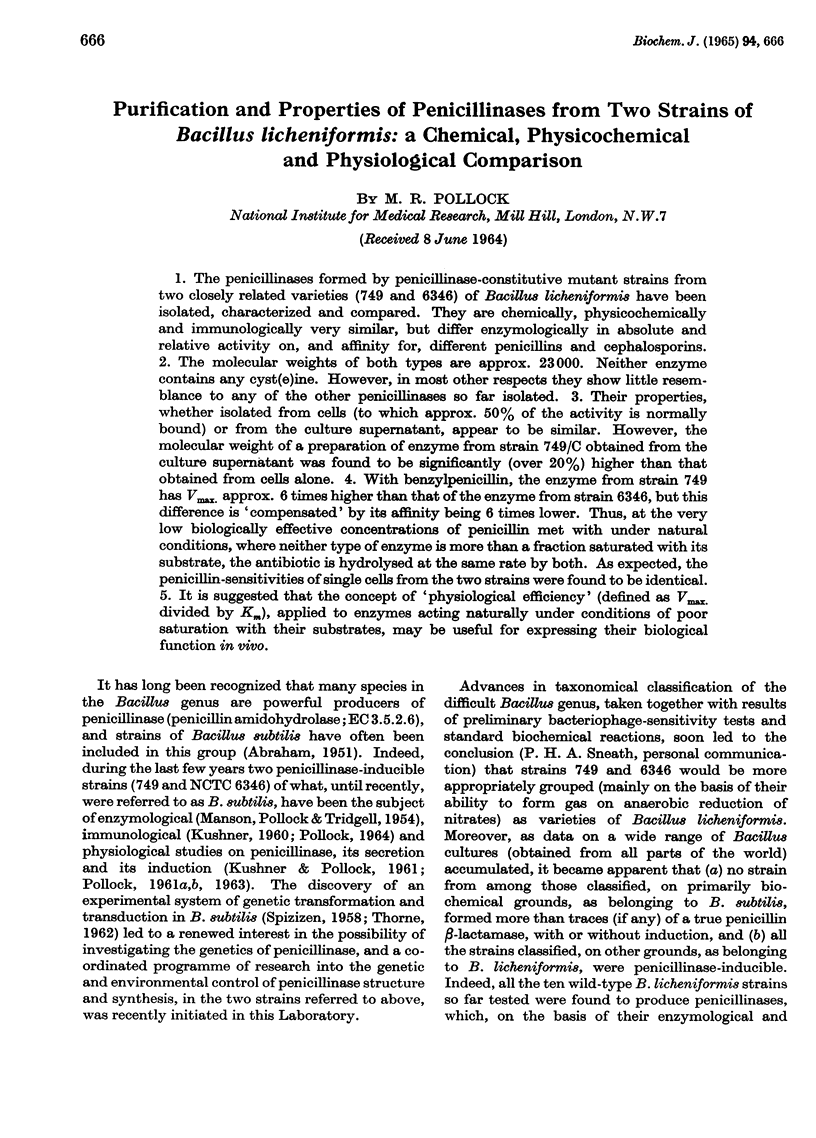
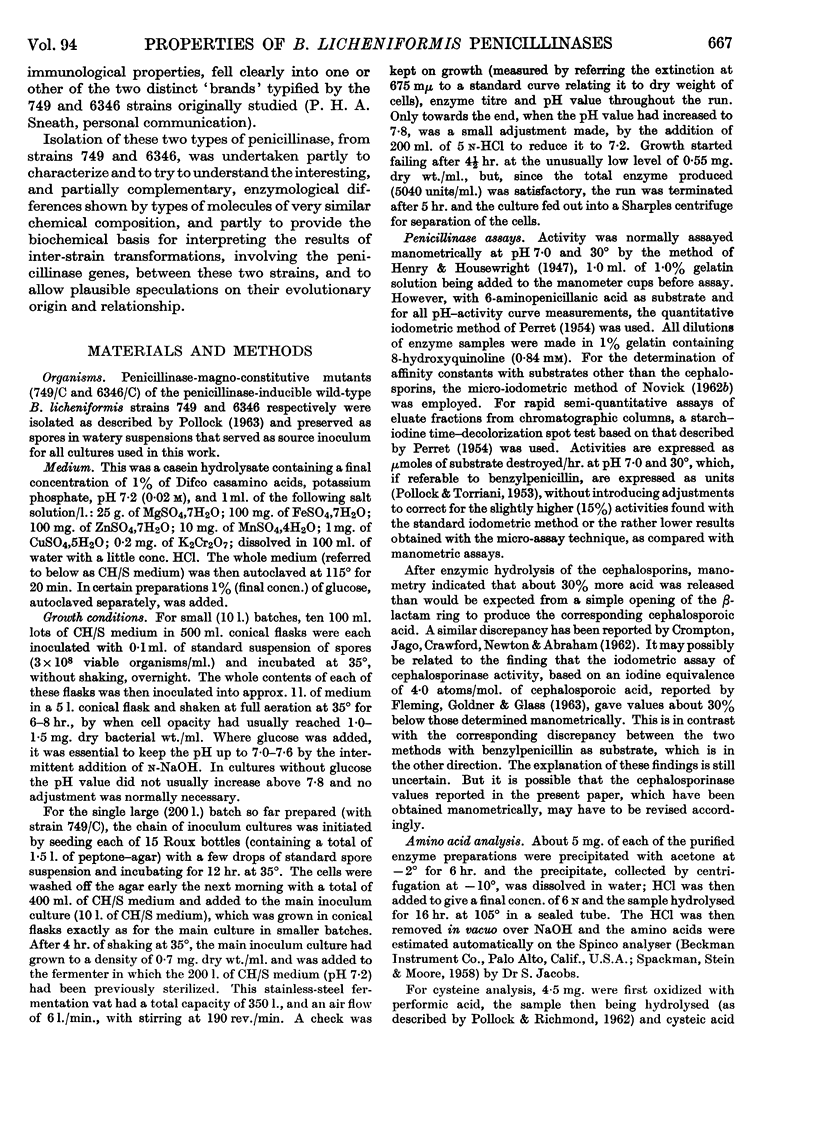
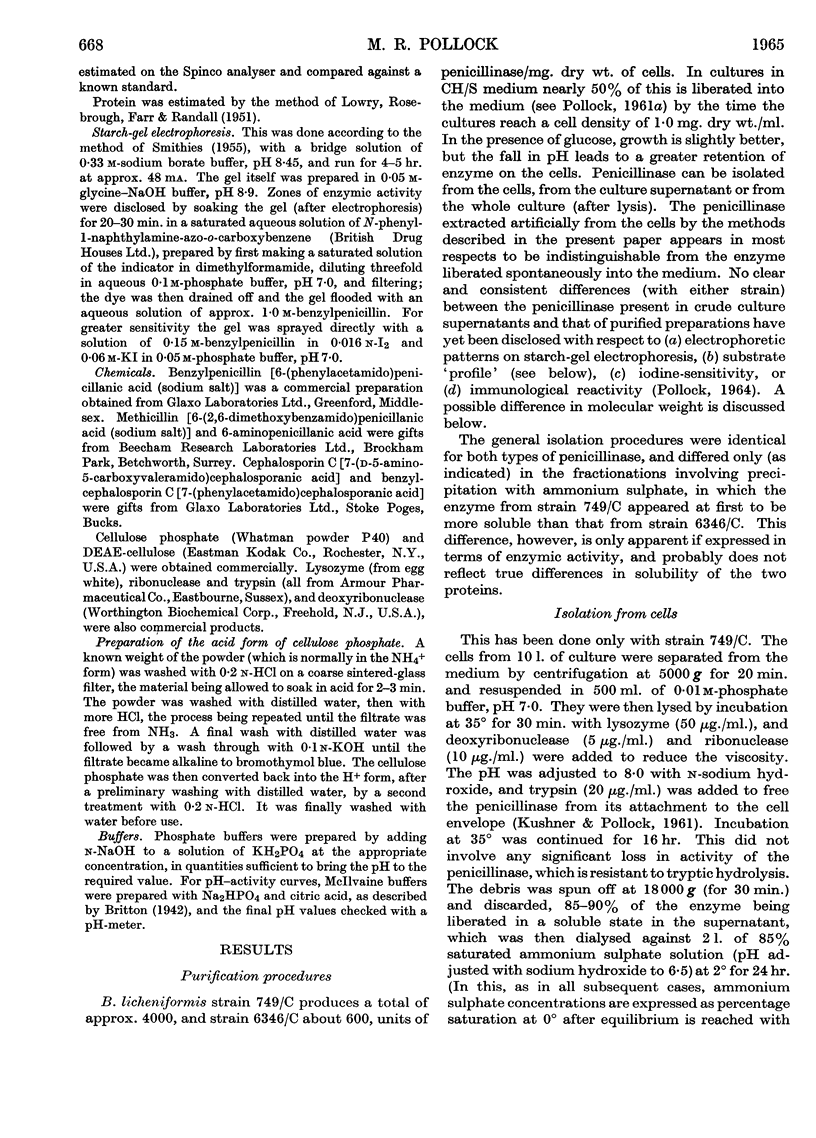
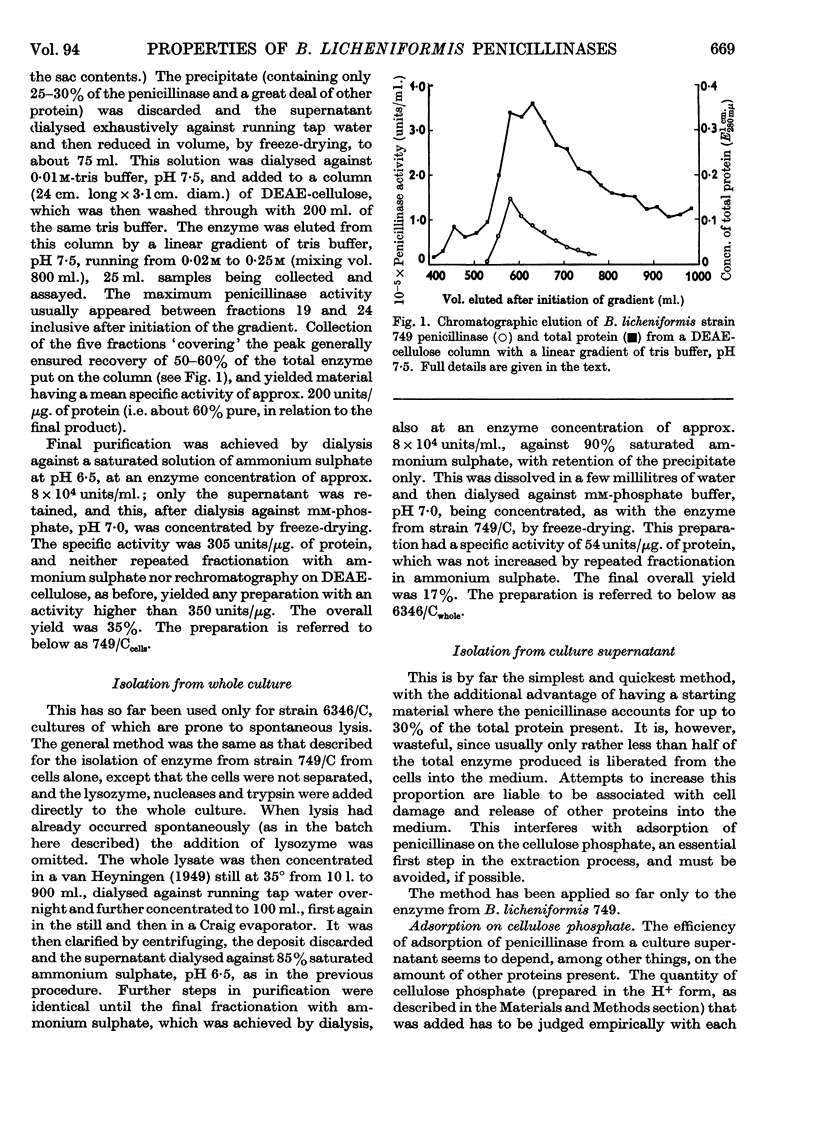
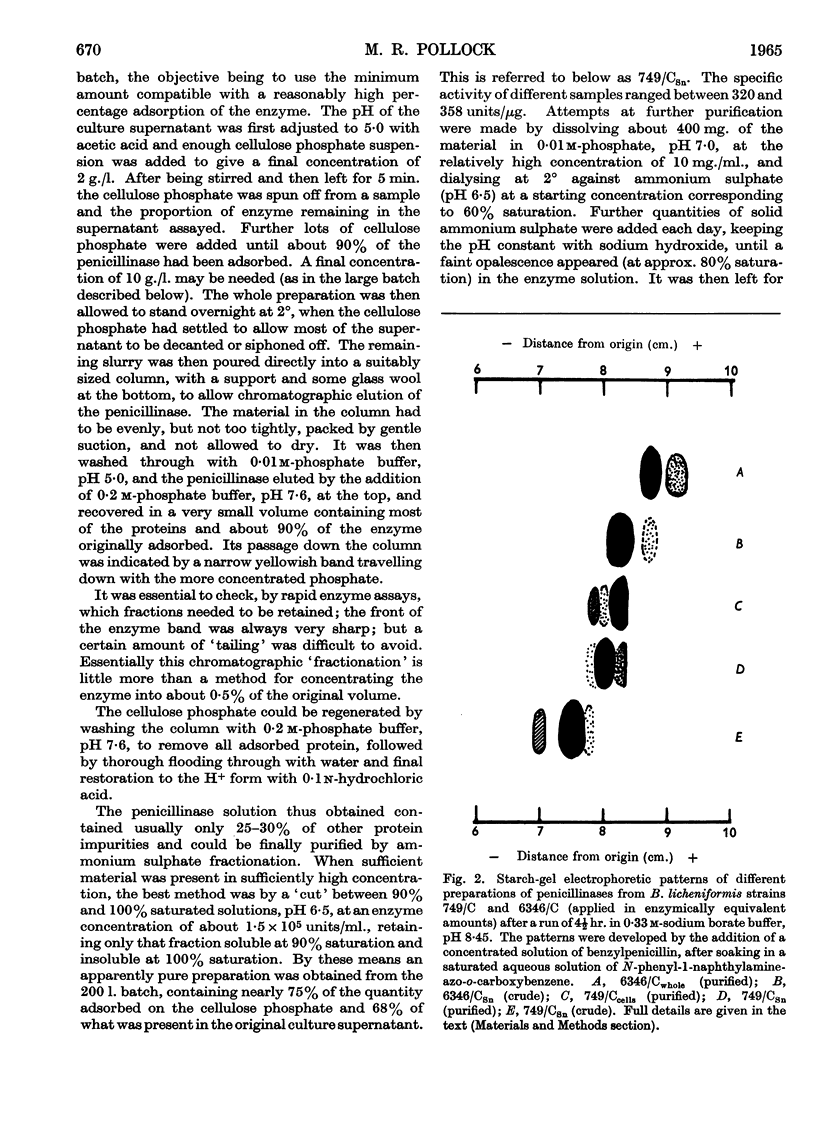
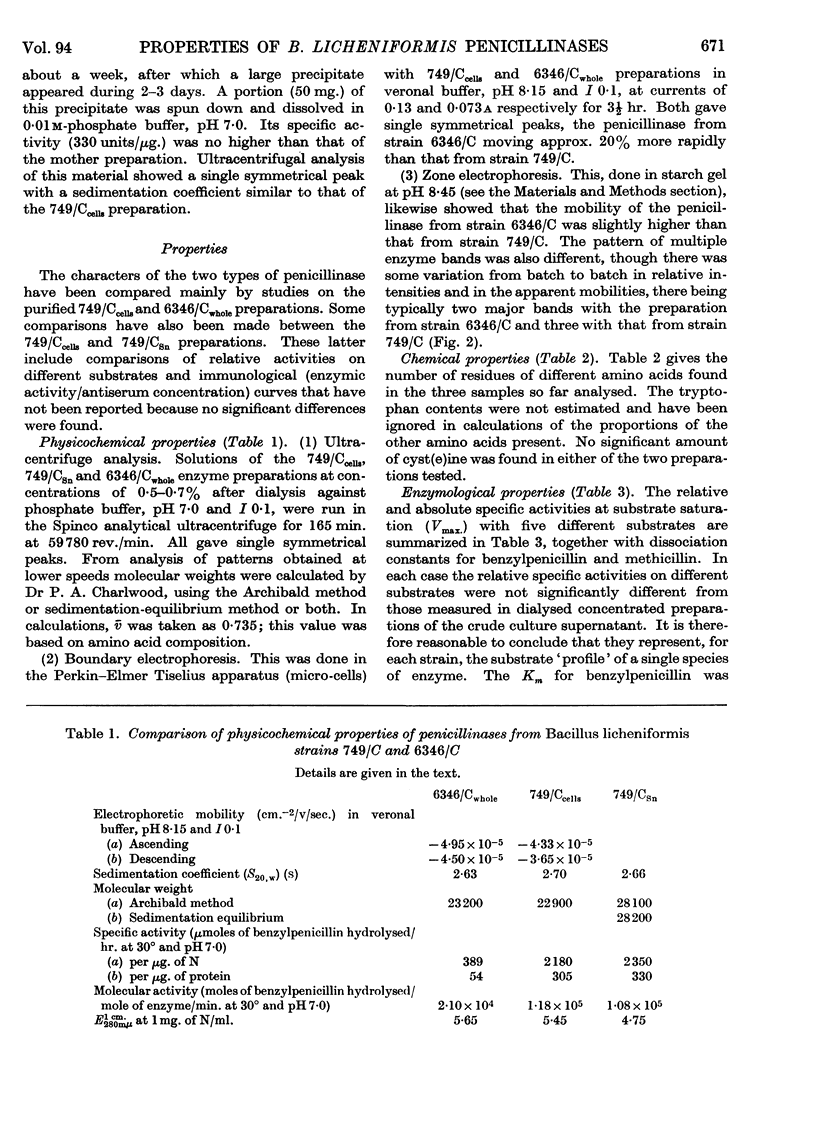
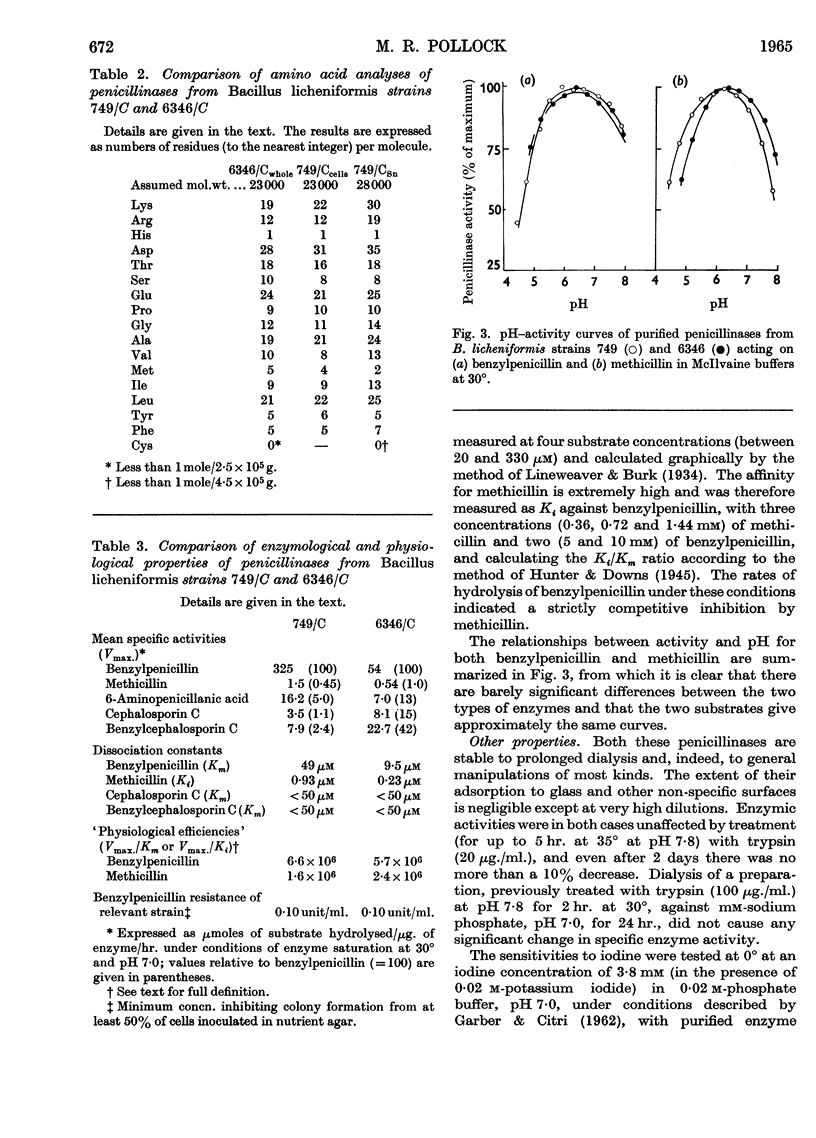
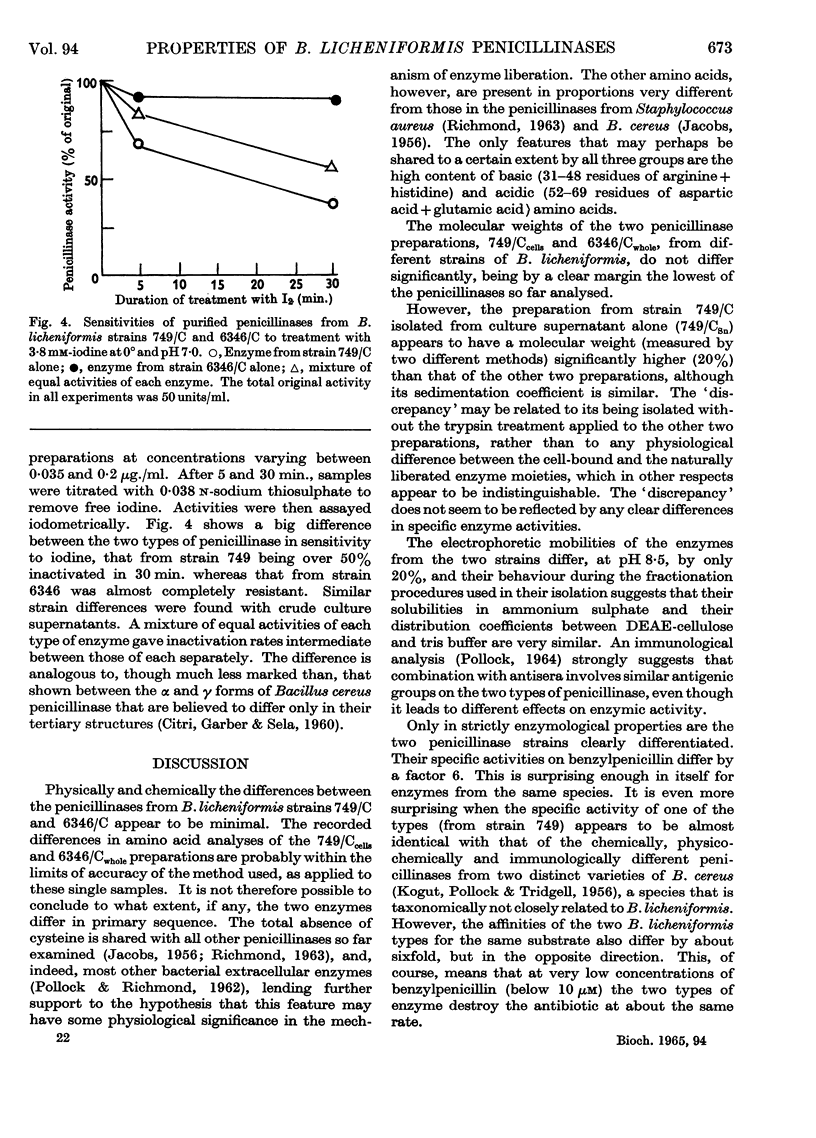
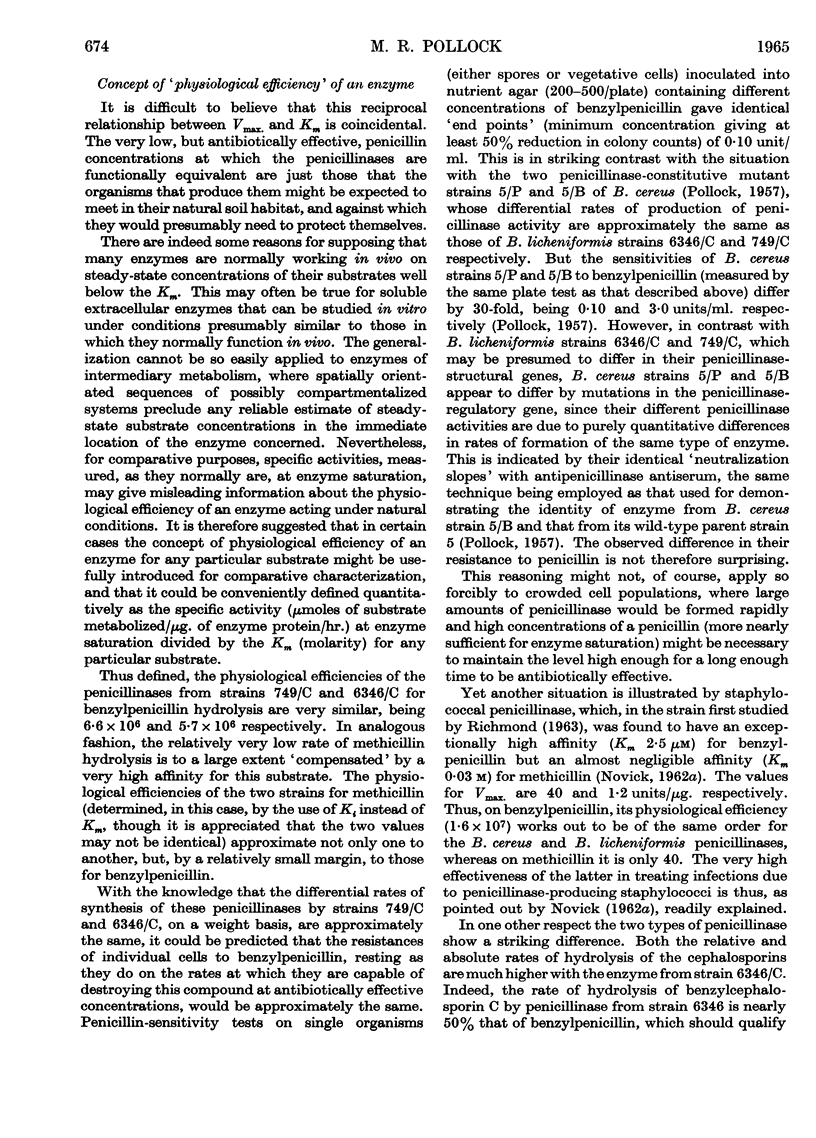
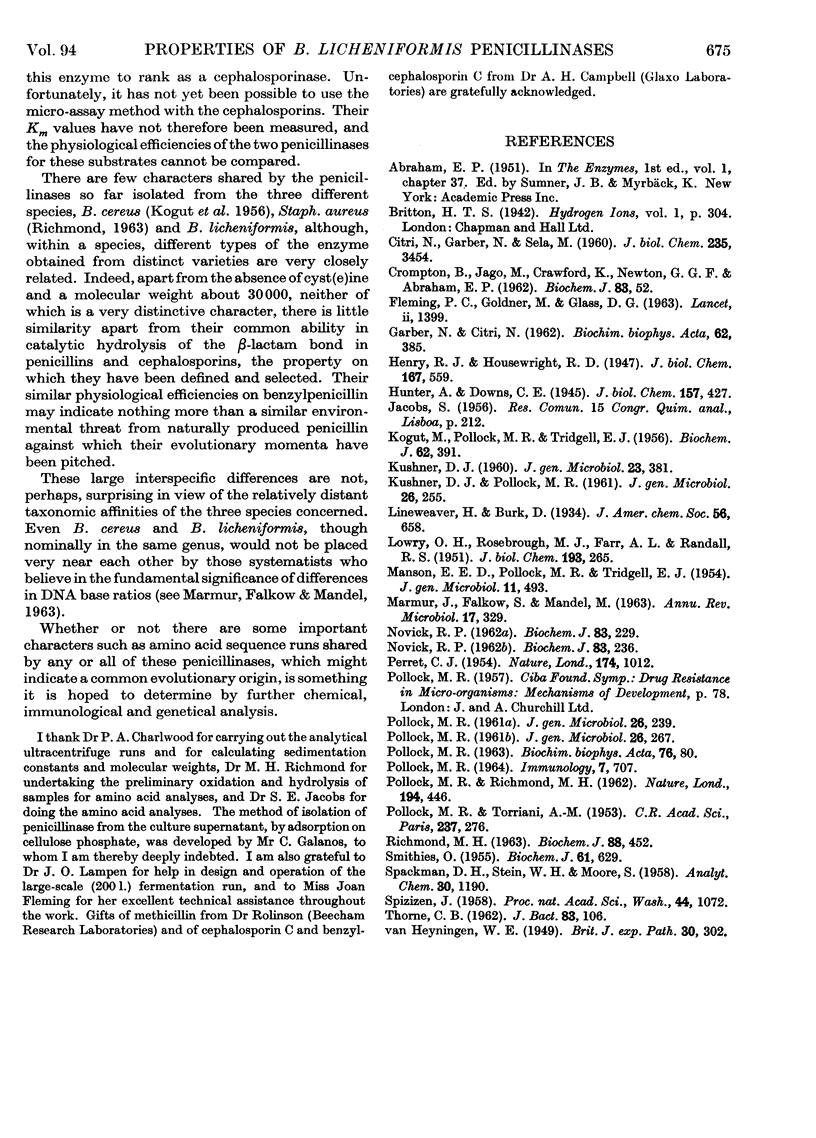
Selected References
These references are in PubMed. This may not be the complete list of references from this article.
- CITRI N., GARBER N., SELA M. The effect of urea and guanidine hydrochloride on activity and optical rotation of penicillinase. J Biol Chem. 1960 Dec;235:3454–3459. [PubMed] [Google Scholar]
- CROMPTON B., JAGO M., CRAWFORD K., NEWTON G. G., ABRAHAM E. P. Behaviour of some derivatives of 7-aminocephalosporanic acid and 6-aminopenicillanic acidas substrates, inhibitors and inducers of penicillinases. Biochem J. 1962 Apr;83:52–63. doi: 10.1042/bj0830052. [DOI] [PMC free article] [PubMed] [Google Scholar]
- FLEMING P. C., GOLDNER M., GLASS D. G. Observations on the nature, distribution, and significance of cephalosporinase. Lancet. 1963 Jun 29;1(7296):1399–1401. doi: 10.1016/s0140-6736(63)92051-8. [DOI] [PubMed] [Google Scholar]
- GARBER N., CITRI N. The interaction of penicillinase with penicillins. I. Effect of substrates and of a competitive inhibitor on native and urea-treated enzyme. Biochim Biophys Acta. 1962 Aug 13;62:385–396. doi: 10.1016/0006-3002(62)90268-8. [DOI] [PubMed] [Google Scholar]
- KOGUT M., POLLOCK M. R., TRIDGELL E. J. Purification of penicillin-induced penicillinase of Bacillus cereus NRRL 569: a comparison of its properties with those of a similarly purified penicillinase produced spontaneously by a constitutive mutant strain. Biochem J. 1956 Mar;62(3):391–401. doi: 10.1042/bj0620391. [DOI] [PMC free article] [PubMed] [Google Scholar]
- KUSHNER D. J. An immunological study of Bacillus subtilis penicillinases. J Gen Microbiol. 1960 Oct;23:381–392. doi: 10.1099/00221287-23-2-381. [DOI] [PubMed] [Google Scholar]
- KUSHNER D. J., POLLOCK M. R. The location of cell-bound penicillinase in Bacillus subtilis. J Gen Microbiol. 1961 Oct;26:255–265. doi: 10.1099/00221287-26-2-255. [DOI] [PubMed] [Google Scholar]
- LOWRY O. H., ROSEBROUGH N. J., FARR A. L., RANDALL R. J. Protein measurement with the Folin phenol reagent. J Biol Chem. 1951 Nov;193(1):265–275. [PubMed] [Google Scholar]
- MANSON E. E., POLLOCK M. R., TRIDGELL E. J. A comparison of the properties of penicillinase produced by Bacillus subtilis and Bacillus cereus with and without addition of penicillin. J Gen Microbiol. 1954 Dec;11(3):493–505. doi: 10.1099/00221287-11-3-493. [DOI] [PubMed] [Google Scholar]
- MARMUR J., FALKOW S., MANDEL M. NEW APPROACHES TO BACTERIAL TAXONOMY. Annu Rev Microbiol. 1963;17:329–372. doi: 10.1146/annurev.mi.17.100163.001553. [DOI] [PubMed] [Google Scholar]
- NOVICK R. P. Micro-iodometric assay for penicillinase. Biochem J. 1962 May;83:236–240. doi: 10.1042/bj0830236. [DOI] [PMC free article] [PubMed] [Google Scholar]
- NOVICK R. P. Staphylococcal penicillinase and the new penicillins. Biochem J. 1962 May;83:229–235. doi: 10.1042/bj0830229. [DOI] [PMC free article] [PubMed] [Google Scholar]
- PERRET C. J. Iodometric assay of penicillinase. Nature. 1954 Nov 27;174(4439):1012–1013. doi: 10.1038/1741012a0. [DOI] [PubMed] [Google Scholar]
- POLLOCK M. R., RICHMOND M. H. Low cyst(e)ine content of bacterial extracellular proteins: its possible physiological significance. Nature. 1962 May 5;194:446–449. doi: 10.1038/194446a0. [DOI] [PubMed] [Google Scholar]
- POLLOCK M. R. STIMULATING AND INHIBITING ANTIBODIES FOR BACTERIAL PENICILLINASE. Immunology. 1964 Nov;7:707–723. [PMC free article] [PubMed] [Google Scholar]
- POLLOCK M. R. THE DIFFERENTIAL EFFECT OF ACTINOMYCIN D ON THE BIOSYNTHESIS OF ENZYMES IN BACILLUS SUBTILIS AND BACILLUS CEREUS. Biochim Biophys Acta. 1963 Sep 17;76:80–93. [PubMed] [Google Scholar]
- POLLOCK M. R., TORRIANI A. M. Purification et caractéristiques physicochimiques de la pénicillinase de Bacillus cereus. C R Hebd Seances Acad Sci. 1953 Jul 20;237(3):276–278. [PubMed] [Google Scholar]
- POLLOCK M. R. The measurement of the liberation of penicillinase from Bacillus subtilis. J Gen Microbiol. 1961 Oct;26:239–253. doi: 10.1099/00221287-26-2-239. [DOI] [PubMed] [Google Scholar]
- POLLOCK M. R. The mechanism of liberation of penicillinase from Bacillus subtilis. J Gen Microbiol. 1961 Oct;26:267–276. doi: 10.1099/00221287-26-2-267. [DOI] [PubMed] [Google Scholar]
- RICHMOND M. H. PURIFICATION AND PROPERTIES OF THE EXOPENICILLINASE FROM STAPHYLOCOCCUS AUREUS. Biochem J. 1963 Sep;88:452–459. doi: 10.1042/bj0880452. [DOI] [PMC free article] [PubMed] [Google Scholar]
- SMITHIES O. Zone electrophoresis in starch gels: group variations in the serum proteins of normal human adults. Biochem J. 1955 Dec;61(4):629–641. doi: 10.1042/bj0610629. [DOI] [PMC free article] [PubMed] [Google Scholar]
- Spizizen J. TRANSFORMATION OF BIOCHEMICALLY DEFICIENT STRAINS OF BACILLUS SUBTILIS BY DEOXYRIBONUCLEATE. Proc Natl Acad Sci U S A. 1958 Oct 15;44(10):1072–1078. doi: 10.1073/pnas.44.10.1072. [DOI] [PMC free article] [PubMed] [Google Scholar]
- THORNE C. B. Transduction in Bacillus subtilis. J Bacteriol. 1962 Jan;83:106–111. doi: 10.1128/jb.83.1.106-111.1962. [DOI] [PMC free article] [PubMed] [Google Scholar]
- VAN HEYNINGEN W. E. A rapid concentrating still. Br J Exp Pathol. 1949 Aug;30(4):302-5, illust. [PMC free article] [PubMed] [Google Scholar]


